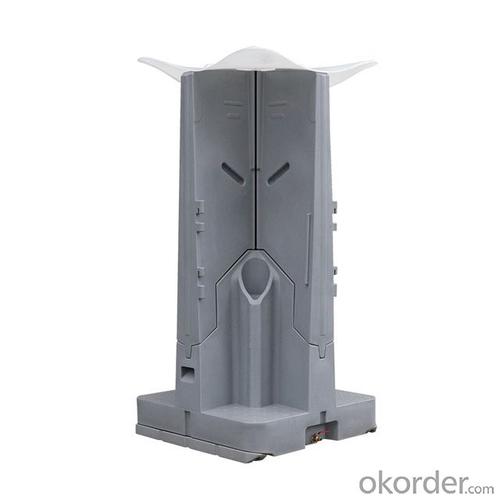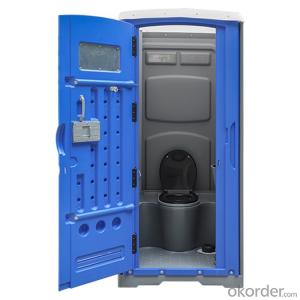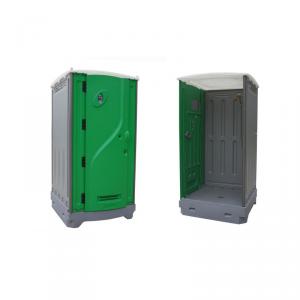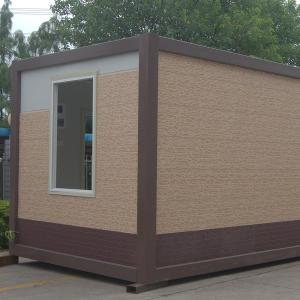HDPE Portable Urinal Unit-Outdoor Portable for man
- Loading Port:
- Xiamen
- Payment Terms:
- TT OR LC
- Min Order Qty:
- 10 set
- Supply Capability:
- 2000 set/month
OKorder Service Pledge
OKorder Financial Service
You Might Also Like
Specification
Why choose us?
Our company CNBM is a Chinese state-owned enterprise and a Fortune 500 in the world.
CNBM is a high-end plastic products enterprise integrating R&D, production and sales.
In many years of export experience,we focuse on operating Portable Toilets and have a complete and scientific quality management system. Thus won the highly recognized by its business partners and clients all over the world and has obtained rapid development under the spirit of win-win .
All VIEWS:


APPLICATION:
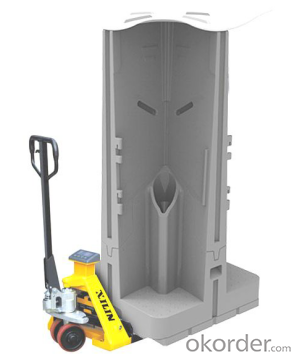


ADVANTAGES:
Portable urinal unit is the ideal product to avoid long lines during crowded events.
Four persons can make use of it simultaneously.
With a 480L waste tank, it saves your effort on the cleaning frequency.
Special design enables the product to be moved by forklift or crane directly.
PACKAGE:
| Packing | 20ft | 40HQ |
| Assembled | 10 units | 20 units |
SPECIFICATION:
| Data | L*W*H | Weight | Waste Tank |
| US | 43.3" x 43.3" x 90.55" | 176.4 Lbs | 129Ga |
| Metric | 1100*1100*2300 mm | 80 Kg | 480L |
Our company's products mainly include: portable toilets, water tanks, fuel tanks, incubators, military tanks, equipment casings, etc. We adopt high-tech technology and comprehensive advanced environmental protection materials to provide customers with one-stop service of design, development, production and after-sales service.
We have a professional and efficient R&D and design team, and has won more than 70 international and domestic invention patents.
CNBM is committed to becoming a leader in the subdivision of plastic products, making life more convenient and environmentally friendly.
- Q: Can container houses be designed with a minimalist interior?
- Yes, container houses can be designed with a minimalist interior. The simplicity and modular nature of container homes lend themselves well to minimalist design principles. With thoughtful planning and strategic use of space, container houses can be transformed into sleek and clutter-free living environments that prioritize function and aesthetics.
- Q: Can container houses be easily transported?
- Indeed, container houses possess the capability to be conveniently transported. A primary benefit of employing shipping containers as dwellings lies in their inherent mobility. These containers are specifically designed for effortless transportation via trucks, trains, and ships, thereby endowing them with exceptional portability. They are constructed to endure the demands of transportation, such as being stacked and relocated numerous times, rendering them suitable for long-distance journeys. Moreover, container houses can be readily disassembled and reassembled, facilitating simple relocation to various sites or even different countries. This adaptability in transportation renders container houses a compelling choice for individuals in search of a movable or temporary housing solution.
- Q: Can container houses be designed with fire-resistant materials?
- Yes, container houses can be designed with fire-resistant materials.
- Q: Are container houses customizable in terms of size?
- Indeed, the size of container houses can be tailored to individual preferences. The adaptable design of shipping containers facilitates convenient adjustments and tailoring to meet specific needs. By incorporating or eliminating containers, container houses can be enlarged or downsized accordingly. Moreover, they can be stacked or interconnected to form more extensive living areas. This versatility in size selection positions container houses as a favored option for individuals seeking a personalized and distinctive dwelling.
- Q: Can container houses be designed to have a pet-friendly layout?
- Yes, container houses can definitely be designed to have a pet-friendly layout. By incorporating features such as pet-friendly flooring materials, designated spaces for pet beds or crates, ample natural light, and easy access to the outdoors, container houses can be customized to provide a comfortable and safe living environment for both humans and their pets. Additionally, incorporating storage solutions for pet toys, food, and supplies can further enhance the pet-friendliness of the design.
- Q: Can container houses be designed with large windows for natural light?
- Yes, container houses can definitely be designed with large windows for natural light. In fact, one of the benefits of using shipping containers as building blocks is their versatility and adaptability to different architectural designs. With proper planning and structural considerations, container houses can have large windows incorporated into their design to allow ample natural light to enter the living space. The size and placement of windows in a container house largely depend on the specific design goals and the intended use of the space. Architects and designers can strategically position windows to maximize natural light while also considering factors such as insulation, ventilation, and privacy. To ensure the structural integrity of the container, modifications may need to be made to reinforce the surrounding walls where the windows will be installed. This can be achieved by adding additional steel supports or framing around the window openings. Additionally, appropriate insulation and weatherproofing measures should be taken to make the house energy-efficient and comfortable. Container houses with large windows can create a bright and airy living environment, making the most of natural light and providing a sense of spaciousness. These windows can also offer beautiful views of the surrounding landscape, enhancing the overall aesthetic appeal of the container house. In conclusion, container houses can absolutely be designed with large windows for natural light, allowing for a well-lit and visually appealing living space. With careful planning and proper modifications, container homes can be transformed into comfortable and inviting spaces that embrace the benefits of natural lighting.
- Q: Are container houses suitable for co-housing communities?
- Yes, container houses can be suitable for co-housing communities. Container houses are a cost-effective and sustainable option for creating affordable housing solutions. They can be easily modified and customized to meet the specific needs and preferences of the co-housing community members. Container houses offer several advantages for co-housing communities. Firstly, they are relatively quick to construct, allowing for a faster occupancy and quicker establishment of the community. This can be beneficial for communities that want to start living together as soon as possible. Secondly, container houses are highly flexible in terms of design and layout. They can be stacked or arranged in various configurations to create different types of communal spaces or private units. This flexibility allows for customization and adaptation to the specific needs of the co-housing community, whether it's creating shared common areas or individual living spaces. Additionally, container houses are often built using recycled materials, contributing to sustainability and reducing environmental impact. This aligns well with the values of many co-housing communities that prioritize sustainable living and eco-friendly practices. Container houses also offer a unique aesthetic appeal, which can foster a sense of community identity and pride. The creative use of containers can create a visually interesting and distinctive community, setting it apart from traditional housing options. However, it's important to note that container houses may have some limitations. They typically have limited insulation, which can lead to higher energy consumption and potentially uncomfortable living conditions. Proper insulation and climate control systems would need to be implemented to ensure the comfort of the residents. Furthermore, container houses may require additional permits and approvals from local authorities, depending on the location and regulations. Co-housing communities considering container houses should ensure that they comply with all legal requirements and obtain the necessary permits before proceeding with the project. In conclusion, container houses can be a suitable option for co-housing communities due to their cost-effectiveness, flexibility, sustainability, and unique aesthetic appeal. However, it's important to address the potential limitations and challenges associated with container houses to ensure the long-term suitability and comfort of the community members.
- Q: Can container houses be built with a home bar or entertainment area?
- Container houses have the potential to incorporate a home bar or entertainment area. These houses offer a versatile and customizable solution for constructing a home, allowing for the inclusion of various amenities such as a home bar or entertainment area. By tailoring the interior design and layout, these spaces can seamlessly blend into the container's structure. For instance, modifications can be made to include a bar counter, storage shelves for beverages, a seating area, and even entertainment systems like TVs or sound systems. Moreover, container houses can be expanded by connecting multiple containers, creating larger living spaces that can accommodate more extensive entertainment areas. By carefully planning and designing, container houses can be transformed into stylish and functional homes that perfectly cater to the homeowner's preferences and lifestyle, while also featuring a home bar or entertainment area.
- Q: Can container houses be designed for commercial use?
- Yes, container houses can definitely be designed and used for commercial purposes. Container houses have gained popularity in recent years due to their versatility, affordability, and sustainability. These structures can be modified and customized to suit various commercial needs, such as offices, retail spaces, restaurants, cafes, art studios, and even hotels. Container houses are easily adaptable and can be expanded or combined to create larger spaces. Their modular nature allows for flexibility in design and layout, making them an ideal choice for commercial use. Additionally, container houses can be easily transported to different locations, enabling businesses to move or expand as needed. With proper insulation, ventilation, and interior design, container houses can provide a comfortable and functional environment for commercial activities. They can also be equipped with all the necessary amenities, such as electricity, plumbing, heating, and air conditioning systems. Furthermore, container houses offer cost savings compared to traditional construction methods. They are typically less expensive to build and can be repurposed from used shipping containers, reducing material waste and environmental impact. In conclusion, container houses can be effectively designed and utilized for commercial purposes. They offer a unique and sustainable solution for businesses looking for affordable and flexible spaces.
- Q: Do container houses require a foundation?
- Yes, container houses require a foundation. A strong and stable foundation is necessary to provide support and stability for the structure, especially since container houses are typically heavy and may require additional reinforcement.
Send your message to us
HDPE Portable Urinal Unit-Outdoor Portable for man
- Loading Port:
- Xiamen
- Payment Terms:
- TT OR LC
- Min Order Qty:
- 10 set
- Supply Capability:
- 2000 set/month
OKorder Service Pledge
OKorder Financial Service
Similar products
Hot products
Hot Searches
Related keywords


